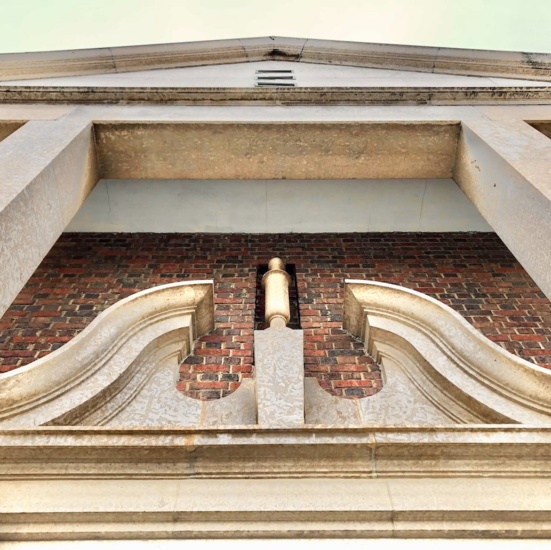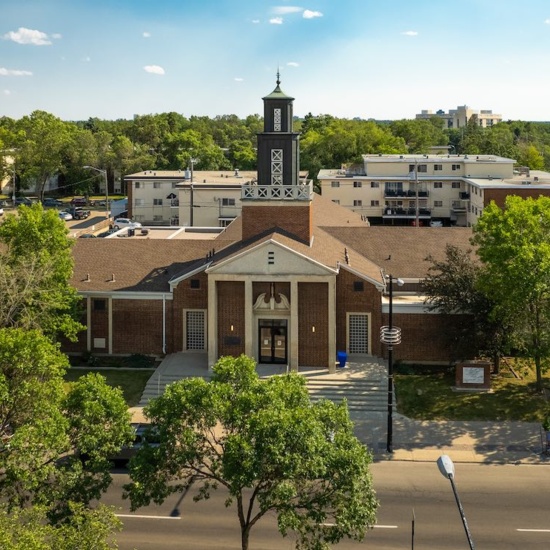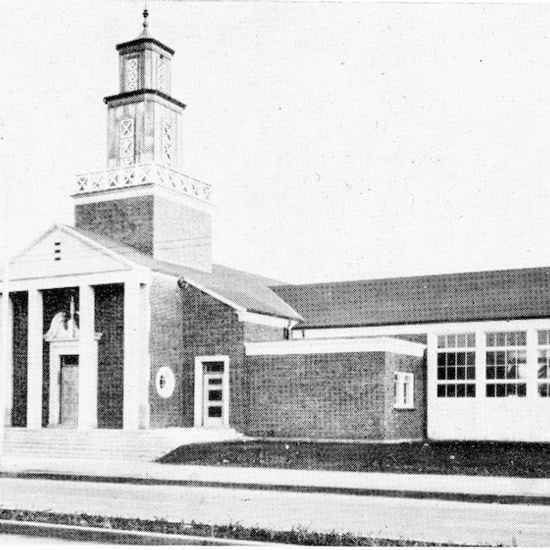Edmonton Branch Chapel
Occupying a half block on Whyte Avenue between a car dealership and a noodle shop is a significant and architecturally-intriguing piece of local religious history.
Occupying a half block on Whyte Avenue between a car dealership and a noodle shop is a significant and architecturally-intriguing piece of local religious history.
The Edmonton Branch Chapel, now known to members of the Church of Jesus Christ of Latter-day Saints as the Whyte Avenue Chapel, was the first building constructed by the faith in Edmonton and remains an important centre for worship and community.
While small numbers of Latter-day Saints had lived and associated in the city since before World War I, their first congregation was formally established in 1935. It initially met in a home in the Alberta Avenue neighbourhood before using a succession of rented halls as the membership increased.
In 1939, N. Eldon Tanner, MLA from Cardston and provincial Minister of Lands and Mines, was called according to the Church’s practice of lay ministry to lead the growing congregation. Through Tanner’s efforts, the church purchased a vacant eight-lot site on Whyte Avenue at 108 Street in 1944. Salt Lake City architects Pope and Thomas prepared schemes for a combined meetinghouse and mission headquarters but due to war-time rationing of building materials, the federal government refused to give permission for construction.
After the war, local Latter-day Saints organized fundraising activities that included Gilbert & Sullivan performances, a visiting choir, and a booth at the exhibition. In October 1948, church authorities in Utah finally approved construction of a building. A new design for a standalone meetinghouse (a mission headquarters had since been established elsewhere) was prepared, likely by William F. Thomas, formerly of Pope and Thomas. Edmonton firm Rule, Wynn & Rule served as architect of record. A groundbreaking ceremony was held in June 1949 and a building permit obtained the following month. General contractor C. H. Whitham Ltd. accommodated voluntary labourers who helped with tasks as varied as transporting brick to the construction site and installing roof sheathing. The building’s interior was sufficiently finished that a baptismal service was held on 23 April 1950 with attendees sitting on temporary benches of saw horses and planks. The first regular Sunday service was held in the building on 3 September 1950 and it was dedicated on 5 August 1951.
The Edmonton Branch Chapel is a snapshot in the evolution of architectural style. Neoclassical columned porticos were common in the Colonial Revival designs favoured by the church’s American-based leadership in the 1940s. The tetrastyle (four-column) portico on the chapel’s Whyte Avenue entrance, however, is executed with Modernist abstraction. In contrast to the round, fluted Corinthian columns of the Alberta Legislature (one of Edmonton’s only other examples of a building with a columned portico) with their defined bases and elaborate capitals, the chapel’s columns are square, undetailed Tyndall stone. Above the doorway is a comparably abstracted swan’s neck pediment centred on a finial-crowned keystone. The four-fold division of a traditional church steeple’s tower, belfry, lantern and spire is clearly evident but reinterpreted for a postwar aesthetic. The chapel thus preserves, in Modern form, classical features that the architecture profession was in the process of jettisoning.
The building has a T-shaped plan with offset wings: the sanctuary and a classroom wing are on either side of a cultural hall. The interior was completely modernized in a 2006 renovation. The exterior is largely unchanged from the original construction except for an early addition to the southeast and removal of the brick chimney. The building’s exterior is red brick set in English bond with Tyndall stone accents. A brick rosette adorns the west facade.
Details
Type
Religious
Designation Status
No Historic Recognition
Neighbourhood
Time Period
Year Built
1950
Architects
Architectural Styles
Character Defining Elements
TBD


